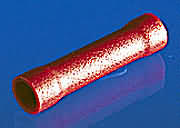J
Johnmelad502
I saw these whilst browsing earlier, if they were used would they negate the normal accessibility requirements?
http://www.tlc-direct.co.uk/Products/ASJ804.html[/QUOTE]
I have seen them used on more than one occasion by NICEIC electricians. The design and installation is down to the spark, so they do meet the requirements of 17th Edition Wiring Regulations BS7671:2008.





